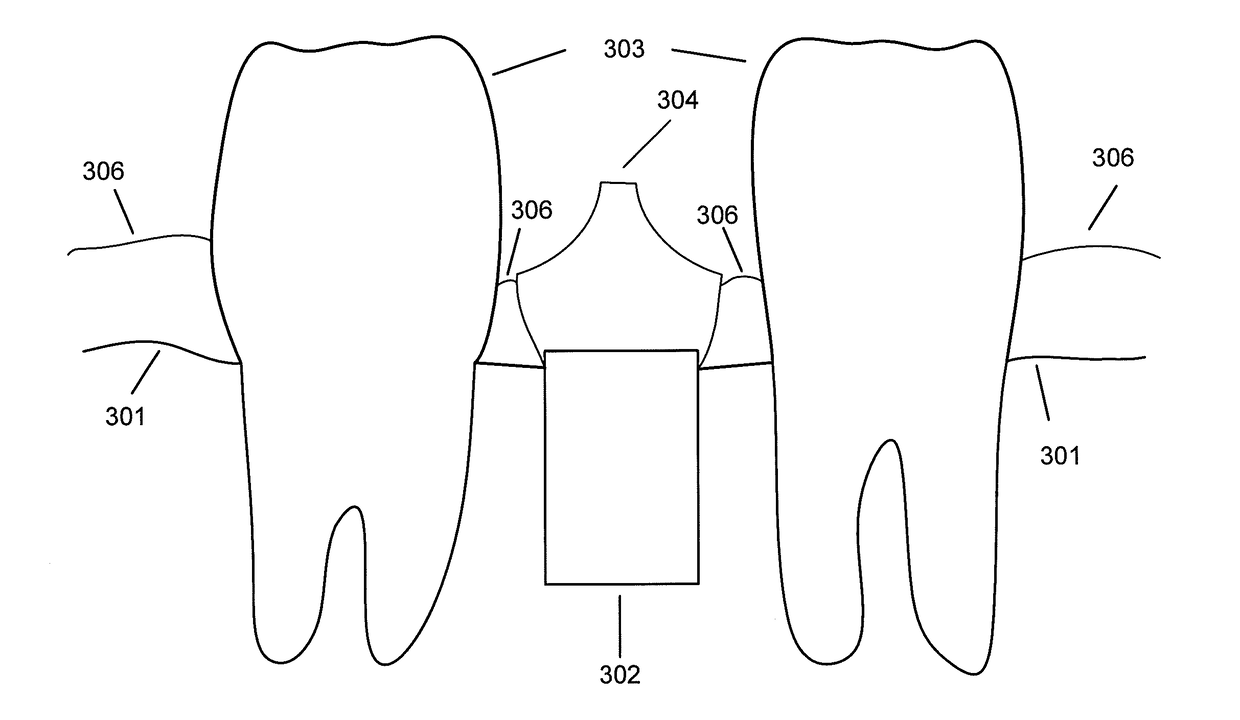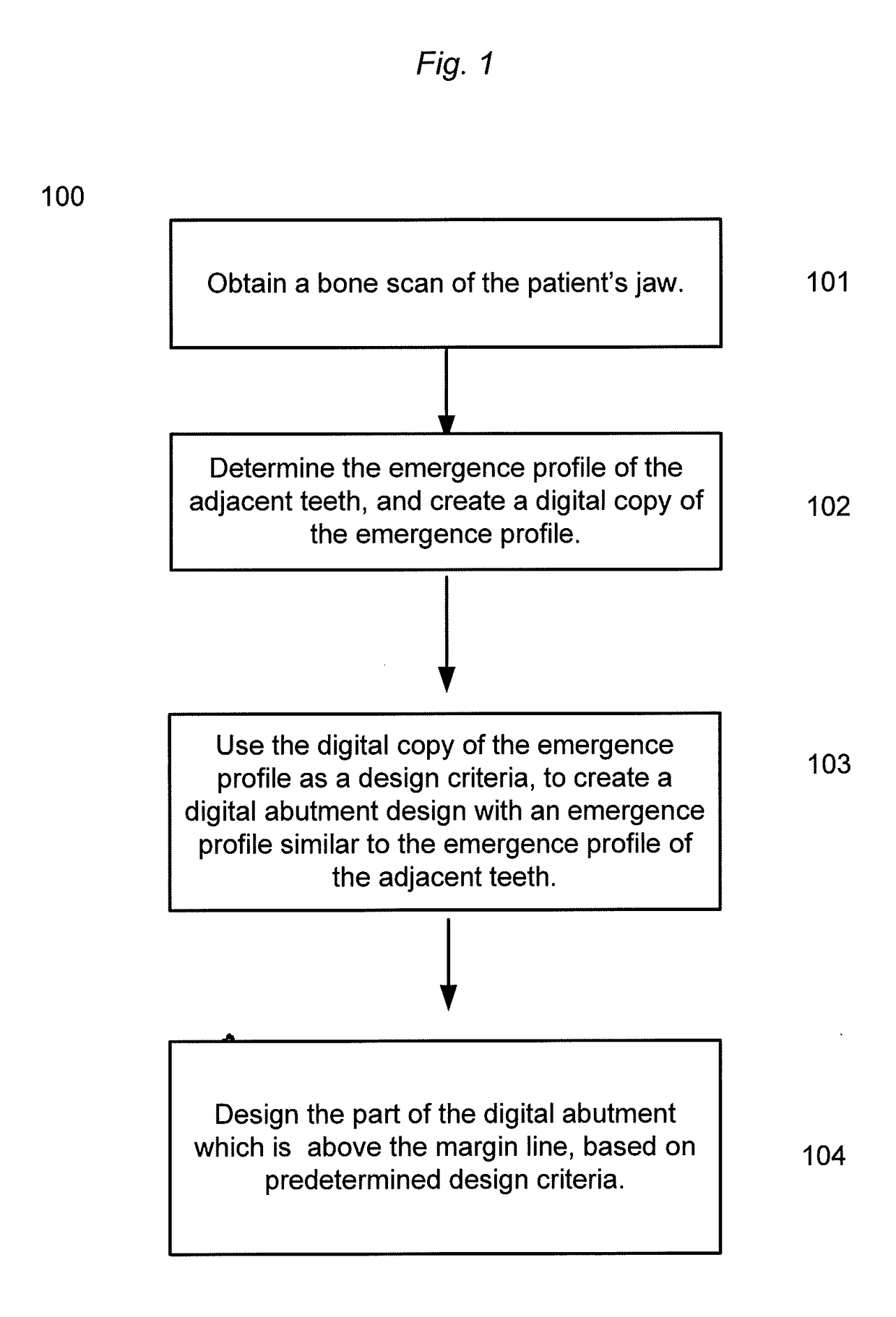Using a cbct bone scan to design a dental abutment
- Summary
- Abstract
- Description
- Claims
- Application Information
AI Technical Summary
Benefits of technology
Problems solved by technology
Method used
Image
Examples
Embodiment Construction
[0043]In the following description, reference is made to the accompanying figures, which show by way of illustration how the invention may be practiced.
[0044]FIG. 1 shows an example of a method 100 according to an embodiment of the invention. In step 101, a bone scan of the patient's jaw is obtained. The scan may comprise a dental implant already fixed in the patient's jawbone. Obtaining the scan may involve the physical operation of a machine, and performing the scan on the patient. Obtaining may also mean loading a previously acquired scan into a computer. In step 102 the emergence profile(s) of the tooth or teeth adjacent to the site of the wanted abutment are determined, and a digital data representation of this emergence profile is generated. In step 103 the digital abutment design is created, using the digital data representation of the emergence profile of the adjacent teeth, so that the digital abutment design is designed with a substantially similar emergence profile. The e...
PUM
 Login to View More
Login to View More Abstract
Description
Claims
Application Information
 Login to View More
Login to View More - R&D
- Intellectual Property
- Life Sciences
- Materials
- Tech Scout
- Unparalleled Data Quality
- Higher Quality Content
- 60% Fewer Hallucinations
Browse by: Latest US Patents, China's latest patents, Technical Efficacy Thesaurus, Application Domain, Technology Topic, Popular Technical Reports.
© 2025 PatSnap. All rights reserved.Legal|Privacy policy|Modern Slavery Act Transparency Statement|Sitemap|About US| Contact US: help@patsnap.com



